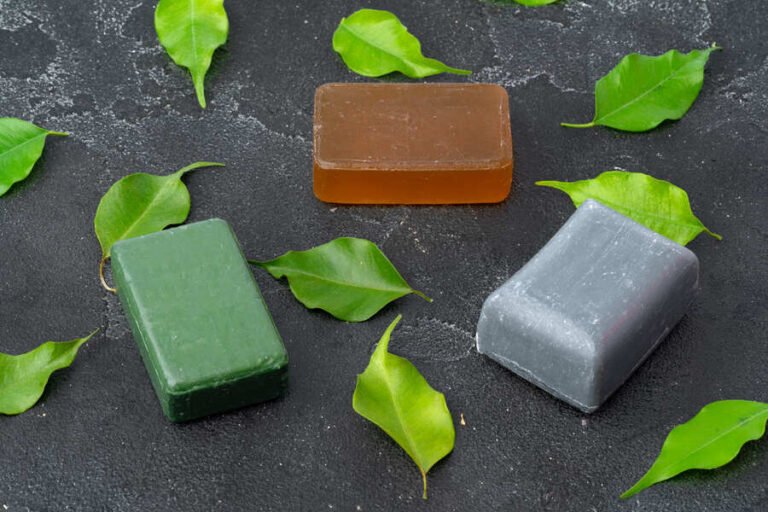Solar nails, a durable and natural-looking alternative to traditional acrylic nails, have gained popularity among those seeking long-lasting nail enhancements. This powder-liquid acrylic overlay offers a resilient option that outlasts conventional acrylics, requiring reapplication only every four weeks with proper care.
Notably, solar nails do not necessitate UV exposure for curing, distinguishing them from gel nails and offering added convenience. This concise introduction aims to provide a comprehensive understanding of solar nails, including their unique features, benefits, and maintenance requirements.
Whether considering them for the first time or seeking to deepen one’s knowledge, this guide serves as a valuable resource for individuals interested in incorporating solar nails into their nail care regimen.
Key Takeaways
- Solar nails are long-lasting, durable, and resistant to chipping and cracking.
- They require less maintenance compared to other nail enhancements.
- Solar nails offer a natural and glossy appearance.
- They can be customized with various designs and colors.
Definition of Solar Nails
While often confused with other types of artificial nails, solar nails are a specific type of acrylic overlay that provides a durable and natural-looking option for nail enhancements.
Unlike gel nail polish, solar nails do not require UV light for curing.
The application process involves a licensed nail technician blending a liquid monomer with a polymer powder and applying it directly to the natural nails, resulting in long-lasting, resilient nails that promote natural nail growth.
Pros and Cons of Solar Nails
When considering solar nails, it is important to weigh the advantages and disadvantages before making a decision.
Solar nails offer durability and a natural appearance, making them a popular choice.
However, they may have limitations in terms of availability and can also present some drawbacks in terms of maintenance and comfort.
Pros of Solar Nails
When considering solar nails, it’s important to weigh the benefits they offer.
Solar nails provide a natural look and feel, are long-lasting and durable, and do not require UV exposure for curing.
Additionally, they are relatively easy to maintain and clean.
Natural Look and Feel
Solar nails provide a remarkably natural appearance and texture, making them a popular choice for those seeking a realistic and elegant manicure. Their long-lasting finish allows for a polished look that lasts up to four weeks, reducing the need for frequent salon visits.
When compared to gel or acrylic nails, the process of applying solar nails is preferred by many due to its air-drying nature vs. UV-curing. This means that there is no need for a UV lamp to cure the nails, reducing the risk of potential skin damage from UV exposure.
Long-Lasting and Durable
One key advantage of solar nails is their exceptional durability, making them a popular choice for those seeking long-lasting and resilient artificial nails. Unlike traditional acrylic nails, solar nails can last up to six weeks without chipping or breaking, providing a low-maintenance and long-lasting option.
Additionally, the removal process is easier with acetone, and they do not require UV light curing, offering convenience and reducing the risk of damage to natural nails.
No UV Exposure Needed
Solar nails offer the advantage of not requiring UV exposure during the application process, providing a safer alternative for individuals concerned about potential skin and eye damage.
Easy Maintenance and Cleaning
With minimal maintenance and easy cleaning, solar nails offer a convenient and long-lasting alternative to other artificial nail options. Unlike natural nails, solar nails are less prone to chipping and breaking. Cleaning solar nails is simple and can be done using acetone and a soft brush, avoiding damaging the nail bed and cuticle area.
The absence of UV light exposure also eliminates the need for special maintenance, making solar nails a hassle-free choice.
Cons of Solar Nails
When considering the cons of solar nails, it’s essential to acknowledge the potential for nail damage due to the use of chemicals. These chemicals can be harsh on the natural nail and may lead to allergic reactions in some individuals.
Additionally, the limited color options for solar nails may not cater to everyone’s preferences. This can be a drawback for those who like to have a wide variety of colors to choose from.
Furthermore, the cost of maintenance should be factored in as well. This includes regular fills to maintain the appearance of the solar nails and the removal process when you decide to remove them.
Potential Nail Damage
The application of solar nails may potentially lead to nail damage due to the use of harsh chemicals and the necessity for regular fills to maintain their appearance.
Potential nail damage includes:
1) Weakening of the natural nails due to the use of acrylic powder and chemicals.
2) Risk of infection or damage to the nail bed from improper application or removal.
3) Thinning and weakening of the natural nails from the use of a nail brush during fills.
Limited Color Options
The limited color options associated with solar nails may present practical challenges for individuals seeking diverse and vibrant nail aesthetics.
Unlike traditional nail polish or gel nails, solar nails typically come in clear or pink shades, limiting the variety of color choices.
This could be a downside for those desiring bold or trendy nail designs, as solar nails may not offer the flexibility to match changing fashion trends or the versatility to complement specific outfits or seasonal color trends.
Cost of Maintenance
Maintenance costs for solar nails can be a significant consideration for individuals seeking long-term nail enhancements. When considering the cost of maintenance for solar nails, it’s essential to weigh the following factors:
- Regular fills at the salon contribute to ongoing expenses.
- The removal process with acetone can potentially damage natural nails.
- Color changes or repairs can be time-consuming and costly.
Understanding these factors can help individuals make informed decisions about the long-term costs of solar nails.
Comparison With Acrylic Nails
Comparison between solar nails and acrylic nails reveals significant differences in durability and maintenance requirements.
Solar nails, being thinner and more natural-looking than acrylics, are more resistant to chipping and breaking. They have a glossier appearance that doesn’t fade easily, unlike acrylic nails that may require nail polish to maintain the gloss.
Solar nails last longer than regular acrylic nails, and they are less likely to damage natural nails as compared to acrylic nails.
Comparison With Gel Nails
When considering solar nails and gel nails, differences in durability, maintenance requirements, and appearance become evident.
- Durability: Solar nails are stronger and last longer than gel nails.
- Maintenance: Gel nails require less frequent touch-ups compared to solar nails.
- Appearance: Gel nails have a glossier, more natural look, while solar nails offer a more natural finish.
Both types are applied as artificial nails but have distinct features, making the choice dependent on individual preferences and desired maintenance level.
Cost of Solar Nails
Solar nails typically cost between INR 2000 and INR 4000, varying by region and salon. While they may be pricier than traditional acrylic nails, their durability justifies the cost.
Unlike gel nails, solar nails don’t require UV exposure for curing, reducing potential damage to the natural nail bed. Additionally, the longer-lasting nature of solar nails means less frequent salon visits, which can make them a cost-effective choice in the long run.
Application Process of Solar Nails
The application of solar nails involves the preparation of the natural nails and the blending of a liquid monomer with a polymer powder. During the application process, the nails are filed and shaped, offering flexibility in design.
Unlike gel nails, solar nails do not require UV exposure for curing, and they can be air-dried. The process concludes with the application of a top coat for added durability and shine.
Removing Solar Nails Safely
To safely remove solar nails, it is essential to first file the top layer of the nails to break the seal before beginning the removal process.
Soak cotton balls in acetone and place them on top of each nail, securing them with aluminum foil or nail clips.
After 15-20 minutes, gently push and remove the softened acrylic using a cuticle pusher.
Seeking professional assistance is advisable to prevent damage to natural nails, as improper removal can be time-consuming and costly.
Conclusion
In conclusion, solar nails offer a durable and long-lasting option for artificial nails, with the ability to maintain their natural appearance for up to four weeks.
Their powder-liquid acrylic overlay provides resilience and convenience, without the need for UV exposure.
While the application process and cost of solar nails may vary, their unique properties make them a popular choice for individuals seeking a low-maintenance and natural-looking nail enhancement option.
Frequently Asked Questions
Which Is Better Dip or Solar Nails?
In comparing dip and solar nails, it’s essential to consider individual preferences and nail care needs. Dip nails offer a strong, long-lasting finish requiring soaking off for removal, while solar nails provide durability and a natural look without the need for UV exposure.
How Long Does Solar Powder Nails Last?
Solar powder nails, known as solar nails, can last up to six weeks, offering exceptional durability. This longevity surpasses that of traditional artificial nails, resulting in reduced maintenance and fewer refills for a cost-effective and lasting manicure solution.
How Do You Remove Solar Nails at Home?
To safely remove solar nails at home, file the top layer, soak cotton balls in acetone, place them on each nail for 15-20 minutes, and gently remove softened acrylic with a cuticle pusher. Exercise caution to avoid damaging natural nails and cuticles. Professional assistance is recommended.







